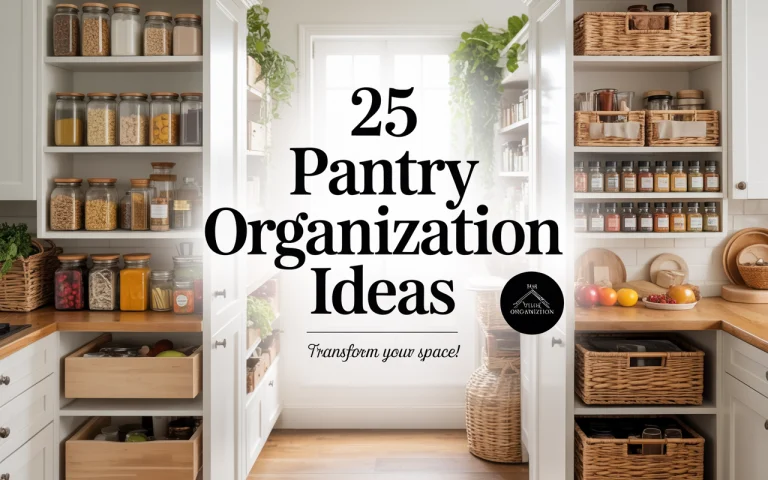25 Pantry Shelving Ideas for Easy Organization
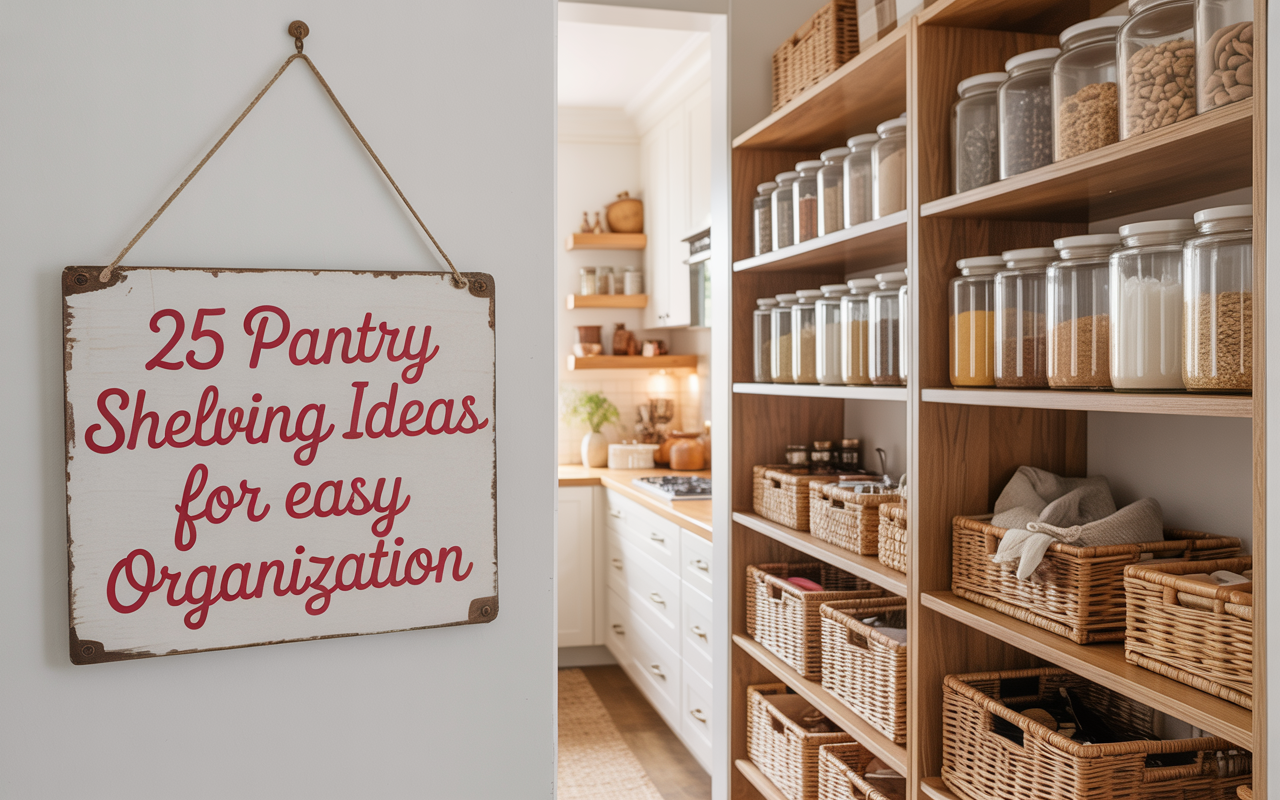
A pantry is more than storage. It is the backbone of a kitchen. The right shelving turns clutter into order, saves time during cooking, and even helps reduce waste. With thoughtful design, shelves can improve daily routines, encourage healthier eating, and keep every inch of space working efficiently. The following ideas go beyond surface-level tricks, offering strategies that make pantries smarter, safer, and easier to use every day. Here are 25 pantry shelving ideas for easy organization.
Plan by daily use, not by size:

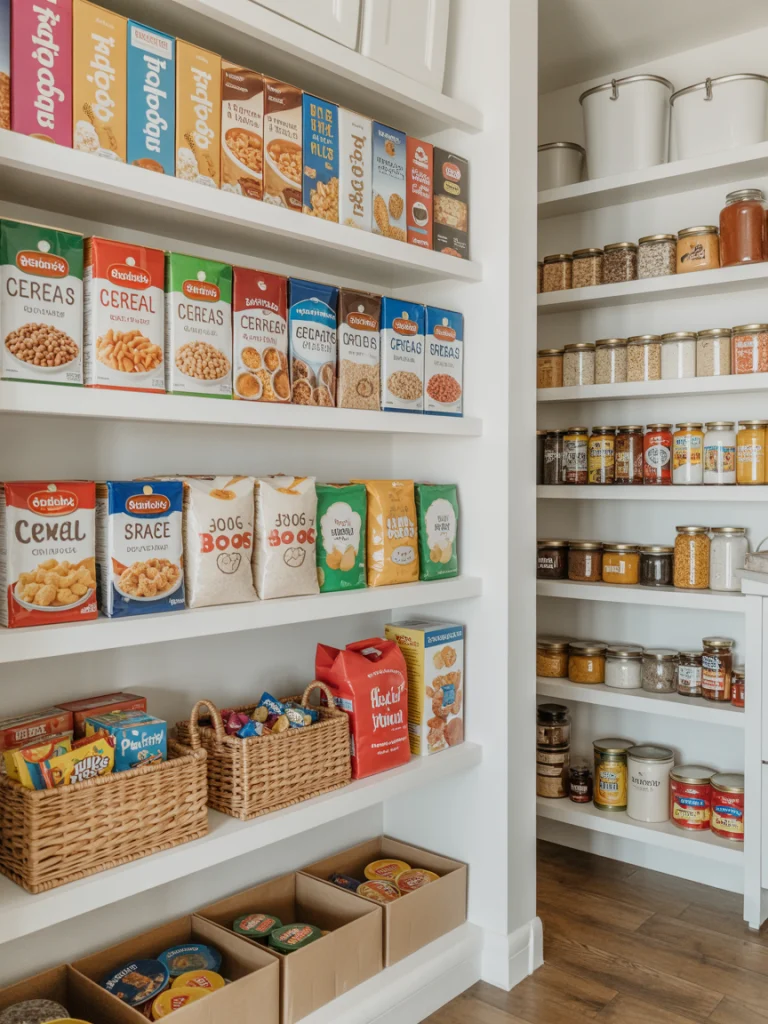
The most useful pantries are arranged by frequency, not just by shelf length. Everyday foods like rice, cereal, and snacks should sit where they can be reached in one step. Bulk items and seasonal foods can stay higher or lower. This small change makes cooking smoother and cuts wasted motion.
A use-based system also helps families stay consistent. Children quickly learn where their snacks are, and adults can grab staples without bending or stretching. Over time, the pantry feels less like storage and more like a well-organized workstation.
Build an eye-level “healthy” shelf:

A single shelf set at eye level can shape eating habits. When fruit, nuts, oats, or whole grains are stored here, they are the first things noticed and chosen. Clear jars make these items more appealing and remind everyone of what is available.
This approach is not only practical. It is behavioral design. Healthy foods become the default, while sweets and processed snacks can be kept in less visible areas. The pantry quietly supports better nutrition without extra effort.
Create a kid-friendly grab zone:
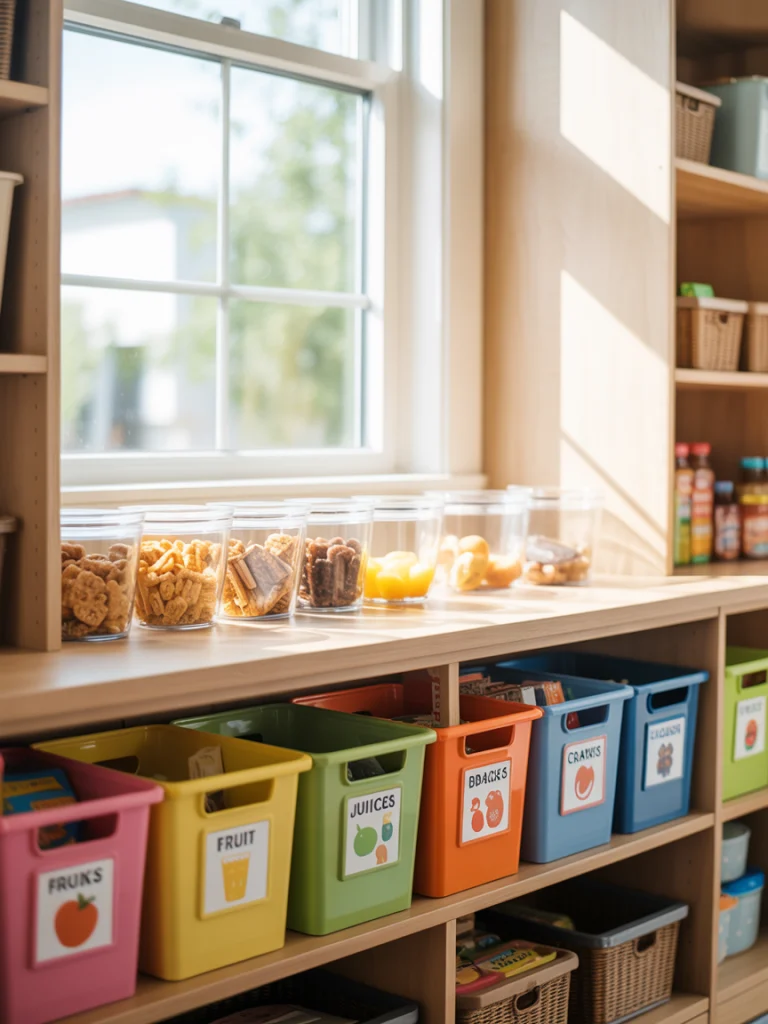
Designating one low shelf for children makes the pantry safer and easier to manage. Lightweight bins for snacks, juice boxes, or small containers help kids serve themselves without scattering items across the room. Simple picture or color labels guide them to put things back where they belong.
A child’s zone reduces climbing risks and teaches independence. It also helps parents maintain order, as children learn responsibility for their own shelf instead of reaching into higher areas.
Place heavy items at waist height:

Large bottles, bags of flour, or appliances should be stored between knee and chest level. This keeps lifting safe and prevents injuries. Adding shallow trays or pull-out boards at this level makes handling heavy loads even easier.
Organizing by safety is as important as organizing by size. When heavy goods are stored too high or too low, the pantry becomes frustrating to use. Waist-height storage strikes the right balance between strength and convenience.
Add pull-forward rails for deep shelves:
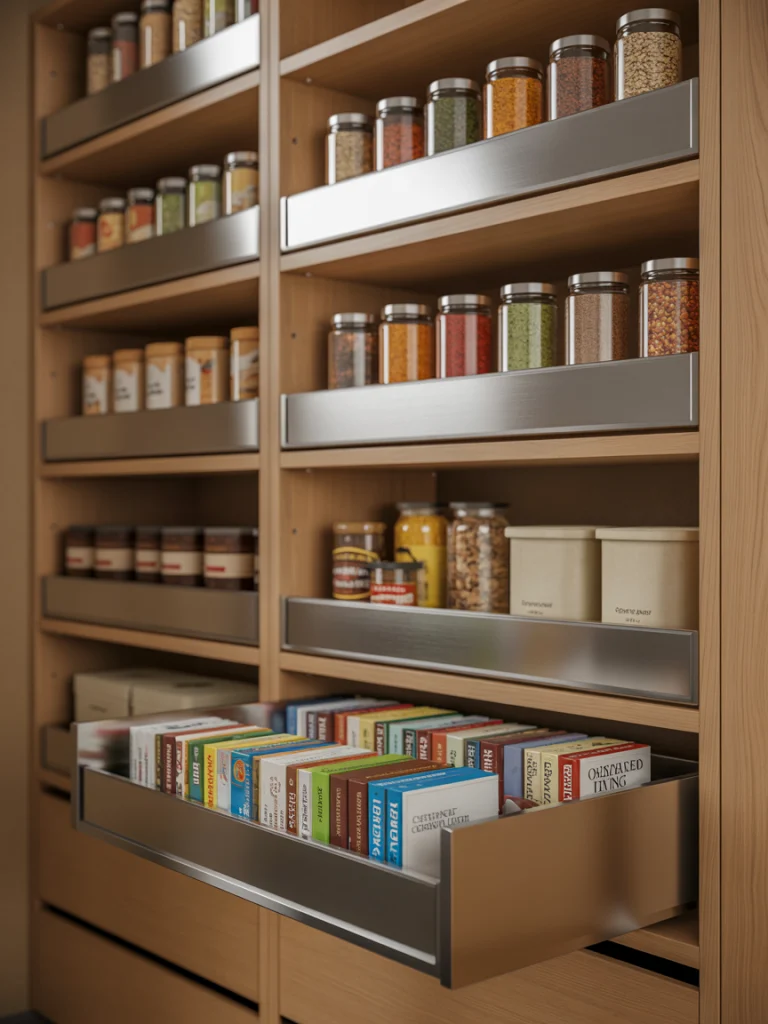
Deep pantry shelves often hide forgotten cans and boxes. Installing simple pull-forward trays on drawer slides brings hidden items into full view. Even a basic rail system can transform storage depth into usable space.
This solution reduces waste by ensuring older items are seen and used first. It also makes stocking groceries faster, since everything can be placed at the back and later rolled forward.
Use swing-out shelves for corners:
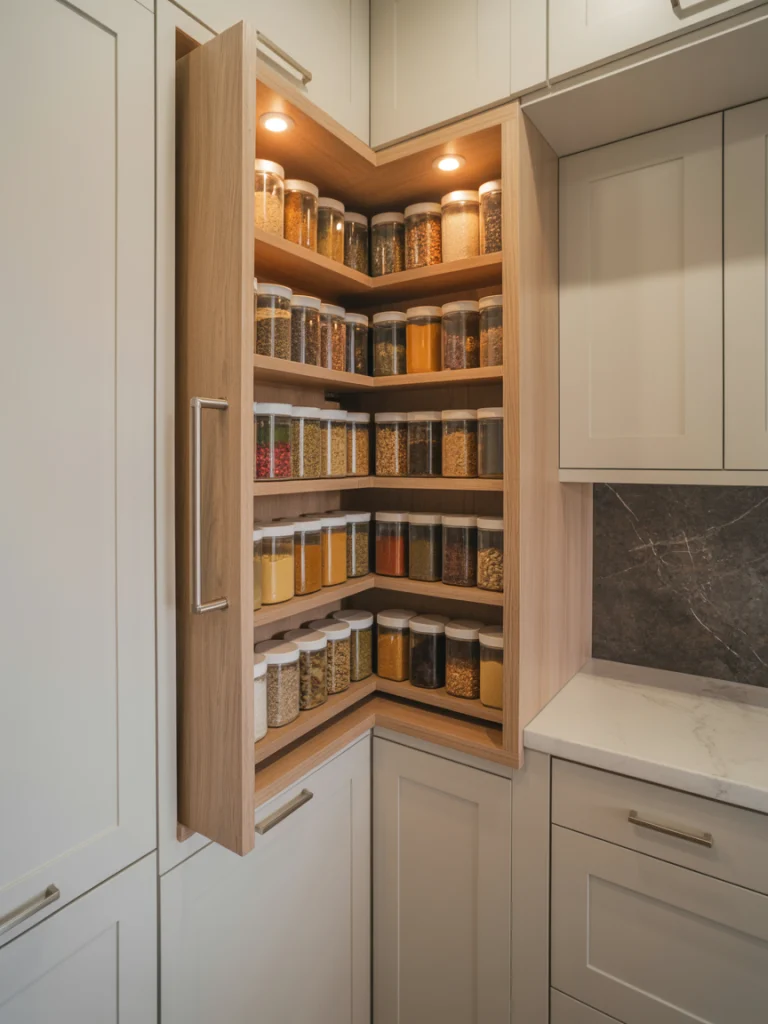
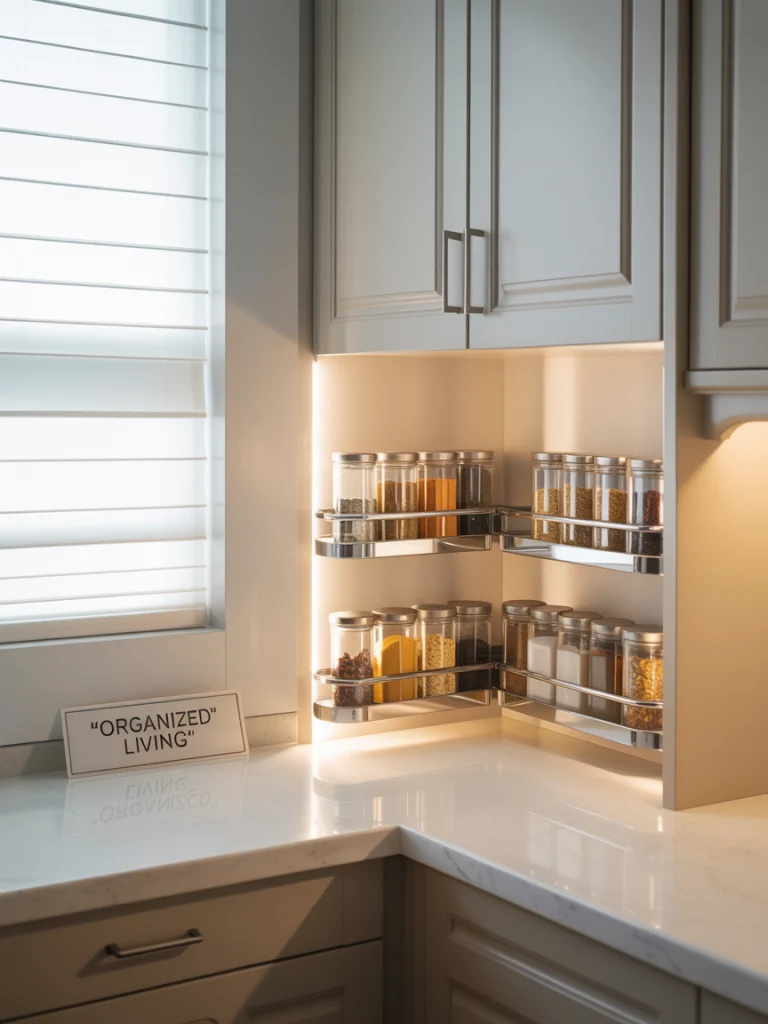
Corner space can be difficult to use well. Swing-out or pivoting shelves solve the problem by bringing contents forward. These shelves move smoothly on hinges and keep even awkward spaces within reach.
Turning dead corners into active storage increases overall capacity without enlarging the room. Every angle of the pantry begins to work toward easy access.
Put racks on the back of the door:

A slim rack fixed to the inside of a pantry door holds wraps, spices, or small bottles. Lightweight items stored here free up shelf space for heavier goods. The racks should be secured firmly so they do not rattle or spill when the door moves.
This is a cost-effective way to multiply storage in tight kitchens. It is especially helpful in apartments or small homes where every inch matters.
Install adjustable track shelves:

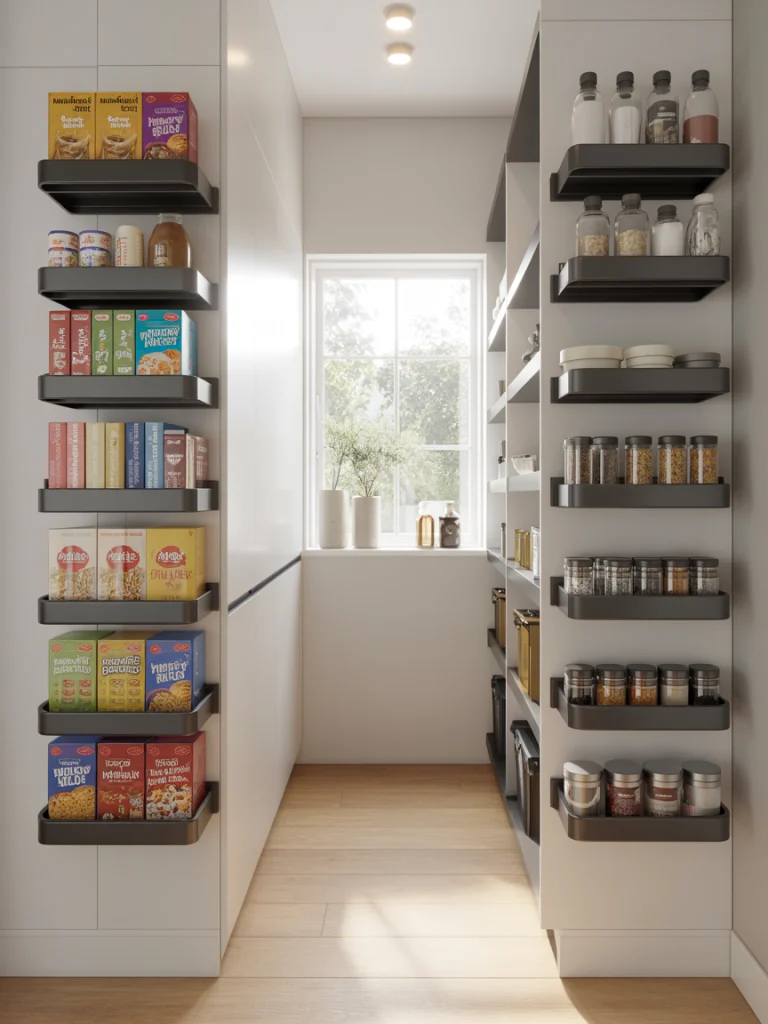
Shelves that move up or down on tracks allow the pantry to evolve as needs change. When children are small, low shelves work best. As they grow, the layout can be raised for taller items. Track systems make these changes possible without rebuilding.
Flexibility ensures that the pantry stays useful for years. As lifestyles shift, the same space continues to function efficiently.
Use clear bins with front labels:


Clear containers give instant visibility, while labels keep categories consistent. The key is placing the label on the front of the bin, not the shelf, so it travels with the container.
This reduces the chance of misplaced items and makes cleaning faster. A labeled system also helps guests or family members find things without asking.
Add a can-rotation insert:

A simple tilted insert allows cans to roll forward automatically. Loading from the back and removing from the front creates a first-in, first-out system that prevents spoilage.
This method works in both large and small pantries. It ensures that older cans are always used before new ones, keeping food costs under control.
Light the shelves with motion LEDs:

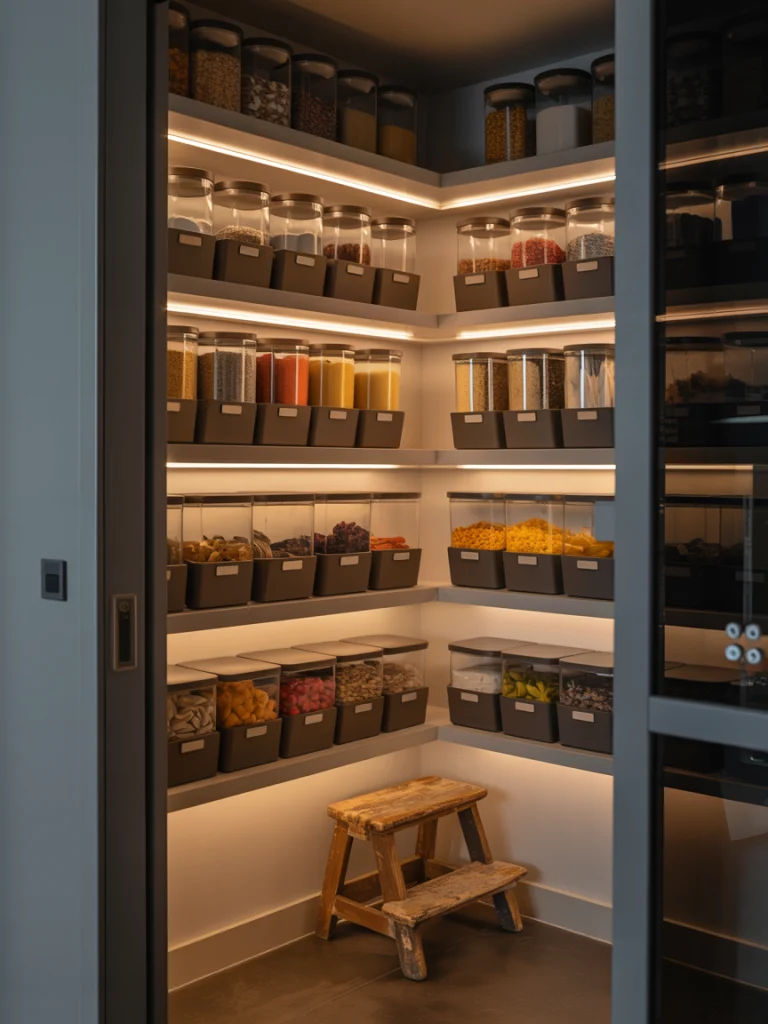
Stick-on LED lights with motion sensors brighten shelves the moment the door opens. This helps identify labels clearly and makes dark corners functional.
Better lighting reduces mistakes during cooking and makes nightly kitchen visits safer. For older family members, it also reduces the risk of falls or spills.
Control pantry moisture:

Moisture shortens the life of dry goods. A small digital monitor can track humidity levels, and natural absorbers like baking soda or silica packs help keep the air dry. Spices and flour should always be sealed in airtight jars.
Maintaining the right environment prevents clumping, bugs, and mold. It protects the pantry as much as the food inside it.
Make a breakfast station on a tray:

Grouping morning foods on a tray simplifies the busiest time of day. Oats, coffee, nut butter, and fruit cups can all be pulled out together. Once breakfast is done, the tray slides back into place.
This arrangement saves time and reduces clutter on counters. It also ensures that all breakfast supplies are stocked in one spot.
Add a baking zone with upright storage:


Baking tools often cause clutter when stacked. Upright dividers for trays and mixing bowls keep them tidy. Large jars for flour and sugar, placed nearby, make scooping simple.
Having a dedicated baking area cuts preparation time. It also encourages more frequent baking, since supplies are organized and easy to reach.
Create a tall bottle niche:
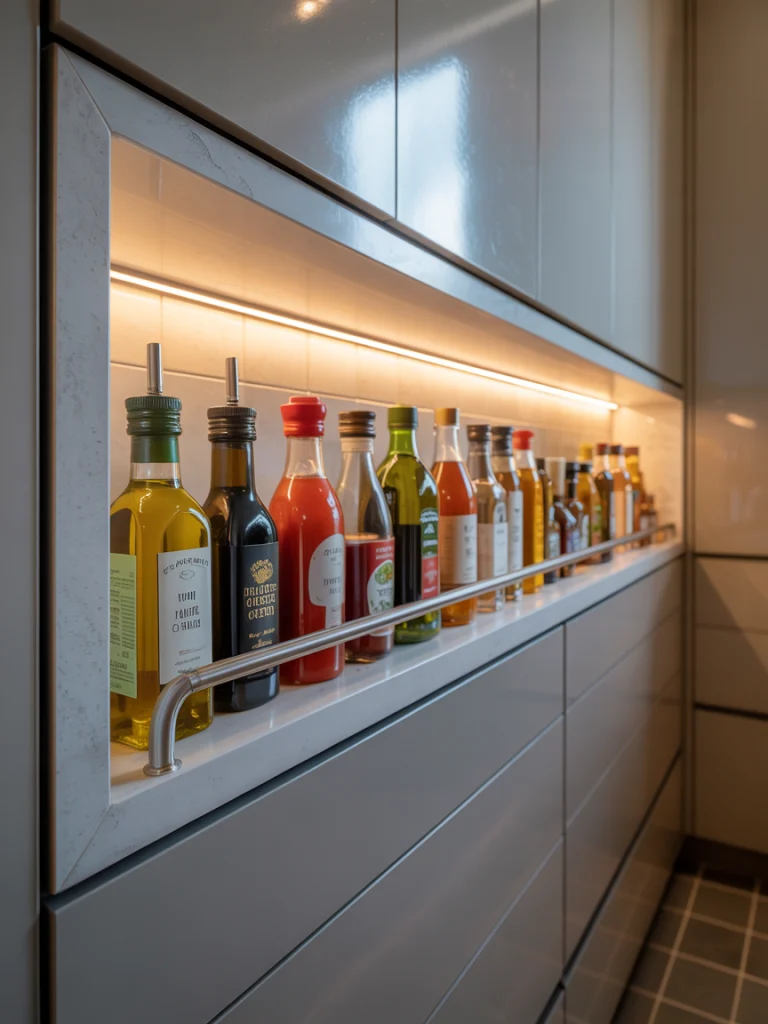
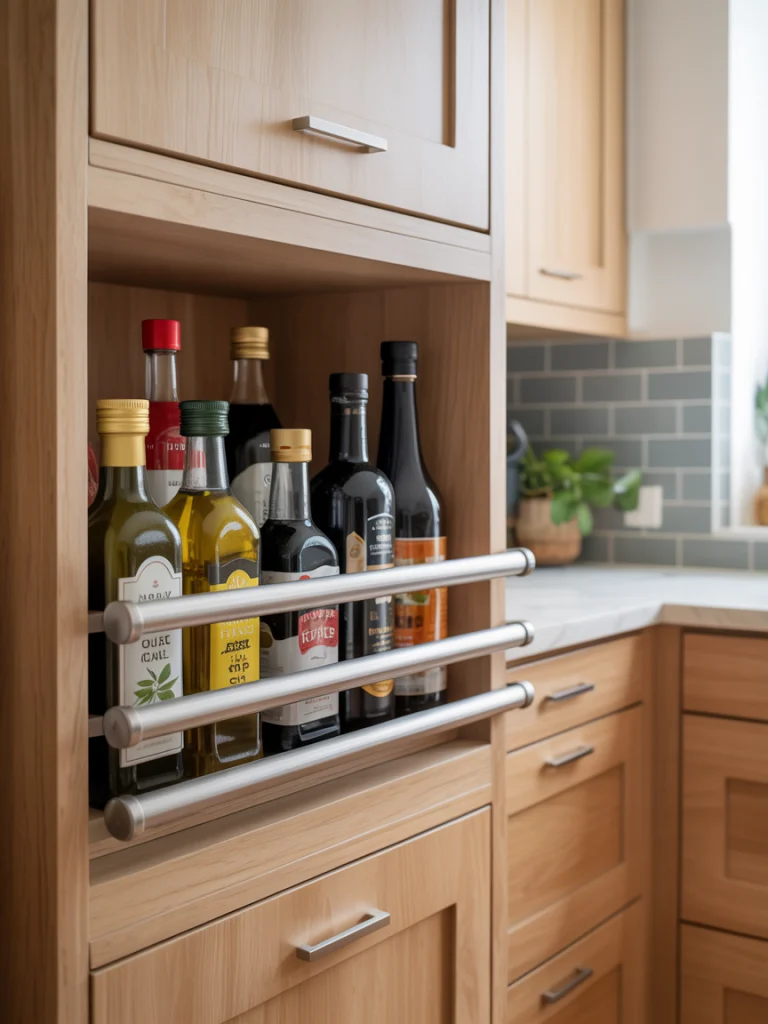
Tall shelves with small guard rails are ideal for oils, sauces, and beverages. A low barrier at the edge prevents tipping. Storing bottles upright in one area reduces leaks and keeps labels clean.
Grouping bottles together also helps track supplies. It is easy to see when an item is low, which prevents last-minute cooking surprises.
Park appliances on pull-out boards:

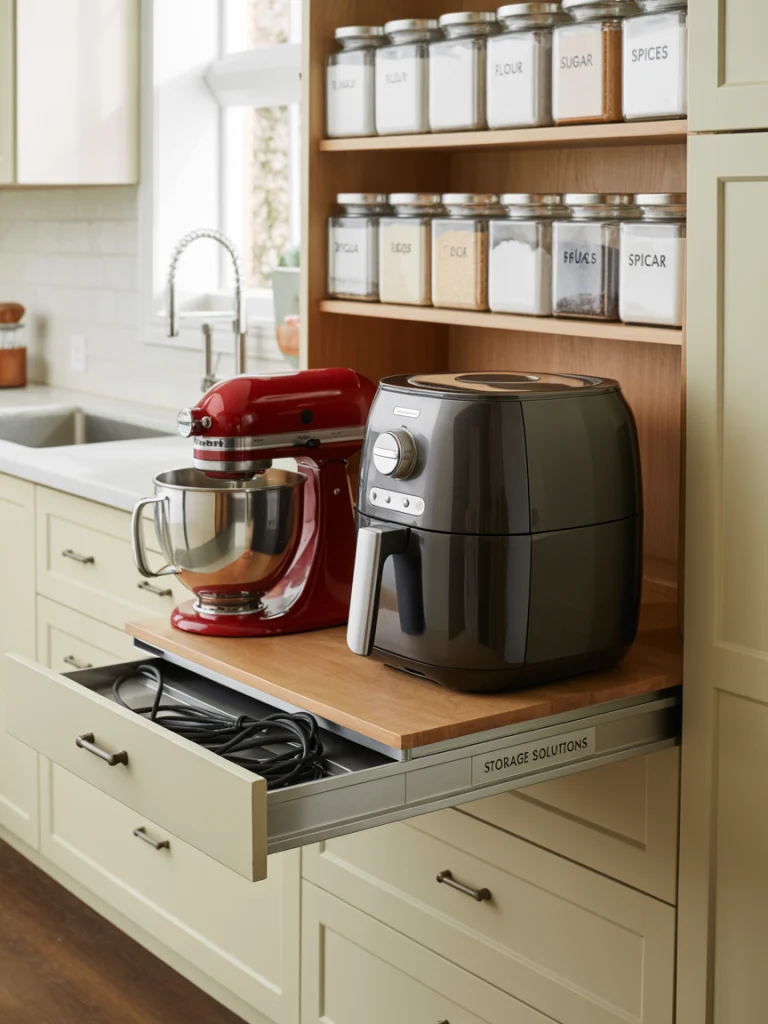
Small kitchen machines like mixers or air fryers take up a lot of space. A pull-out board at counter height allows them to be used without lifting. Cords can be routed through a back slot to keep the setup neat.
This saves effort and protects appliances from damage. It also frees kitchen counters for everyday cooking tasks.
Hang scoops and bags under a shelf:
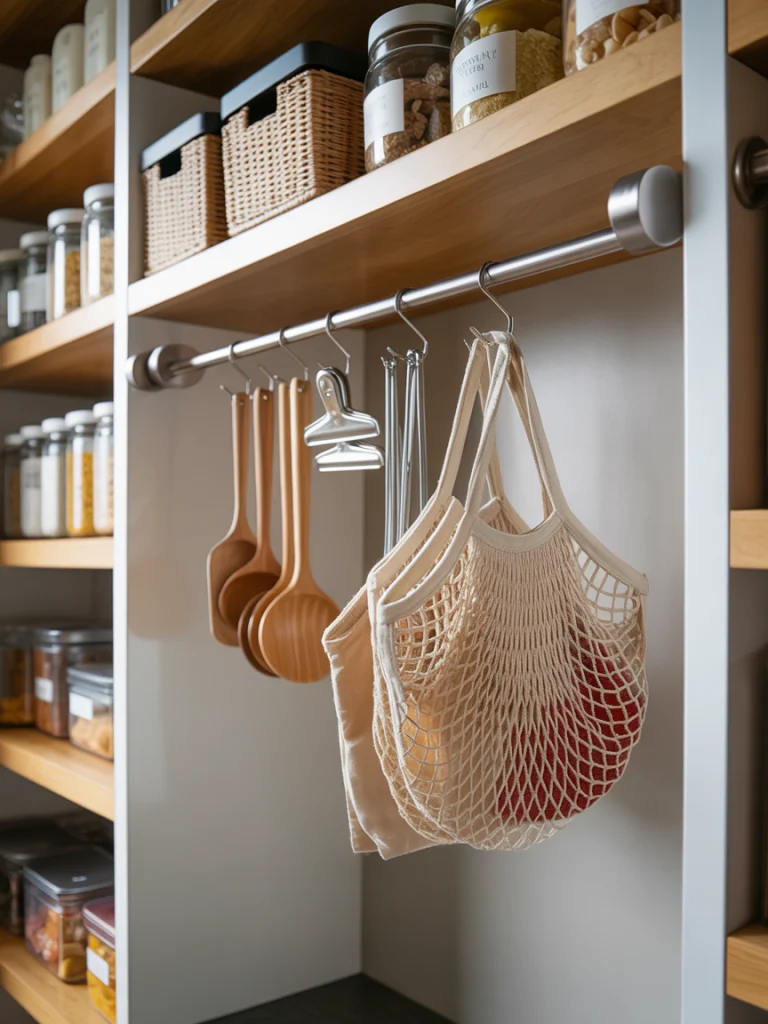
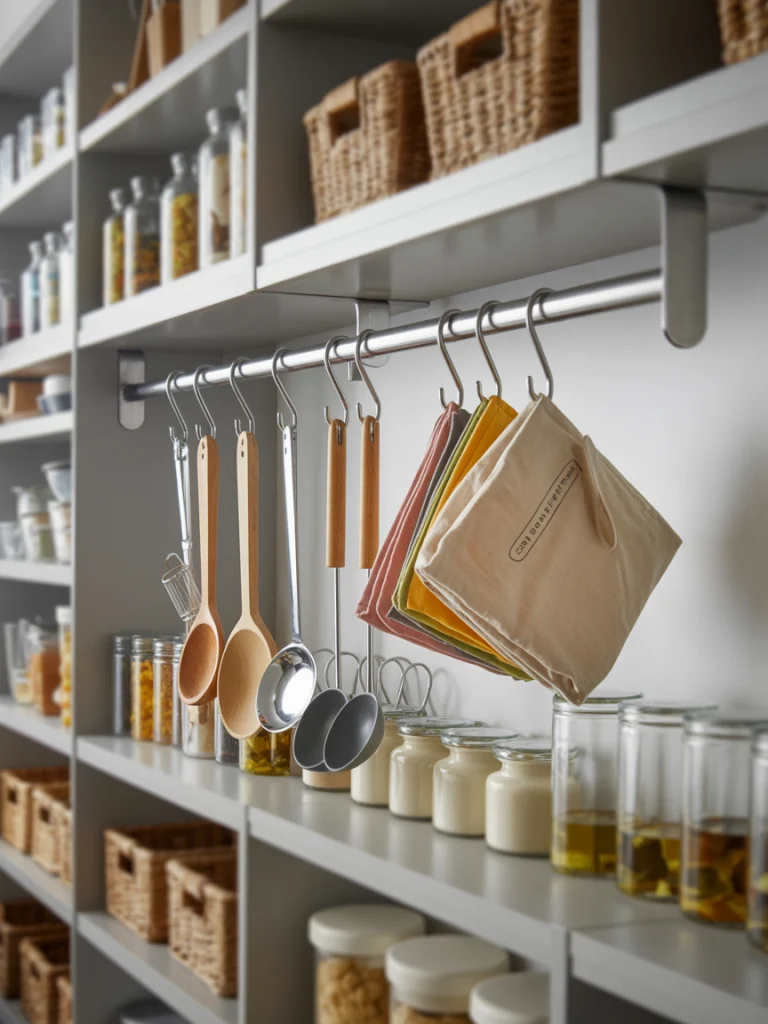
A slim rod beneath a shelf can hold scoops, clips, and produce bags. This makes use of vertical space that often goes unused. Keeping small tools nearby improves workflow during meal prep.
Hooks and rods keep clutter off the shelves while keeping tools in plain sight. Even small kitchens benefit from this added layer of order.
Dock a rolling cart in a side slot:


A slim cart can slide into a narrow gap between shelves or beside the fridge. It can hold party supplies, cleaning products, or overflow groceries. When needed, the cart rolls out and acts as extra counter space.
This mobile feature makes the pantry flexible. Instead of being static storage, it adapts to different occasions.
Build a modular crate wall:
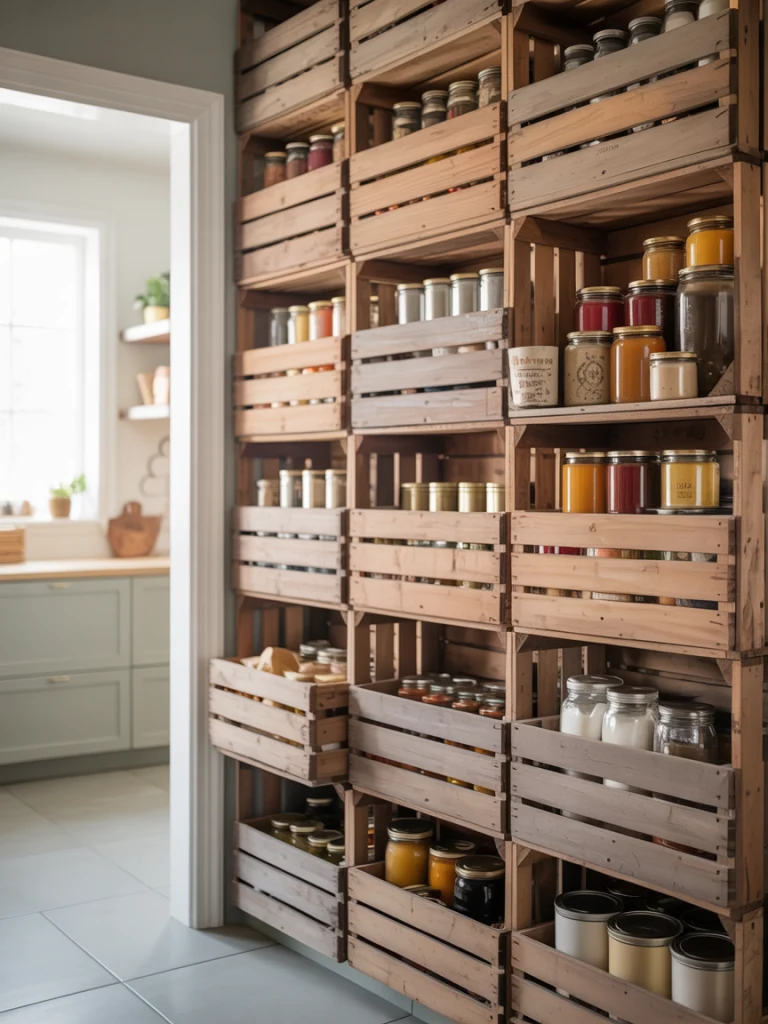
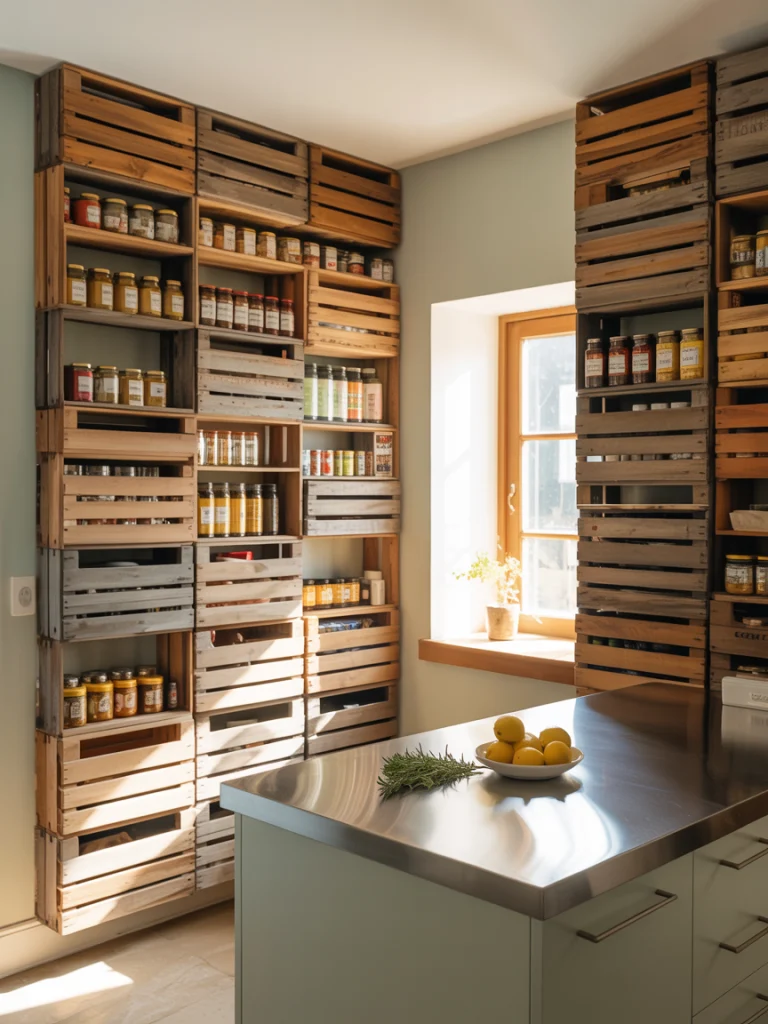
Wooden crates fixed to the wall form a customizable storage wall. Crates of different sizes can be swapped or rearranged as pantry needs grow. Leaving one crate empty provides a buffer for new stock.
This approach combines rustic style with long-term practicality. It is affordable, adaptable, and easy to repair.
Store a step stool with a strap:

High shelves are only useful if they can be reached safely. A foldable step stool stored in a strap or niche near the pantry keeps access simple.
Safe access encourages the use of full vertical space without the risks of climbing on chairs or counters.
Keep a rotating seasonal shelf:

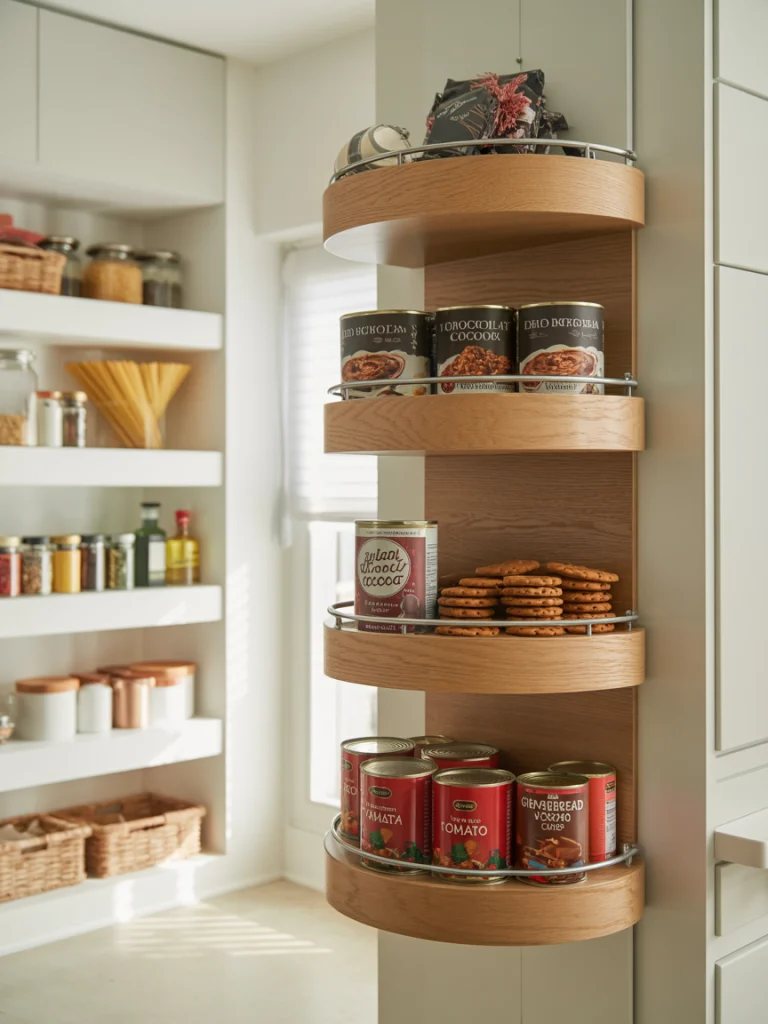
One shelf can be reserved for seasonal products. In winter, it might hold cocoa and canned soups. In summer, grilling spices or picnic supplies can take its place.
This rotation keeps the pantry dynamic and prevents old seasonal items from sitting unused for months.
Use wipe-clean shelves with protective edges:


Shelves with smooth, sealed surfaces are easiest to clean. A small lip at the front prevents spills from dripping onto lower levels. Rounded edges also reduce snags on bags and sleeves.
Durability and easy cleaning extend the lifespan of both the shelves and the food stored on them.
Build into wall cavities:
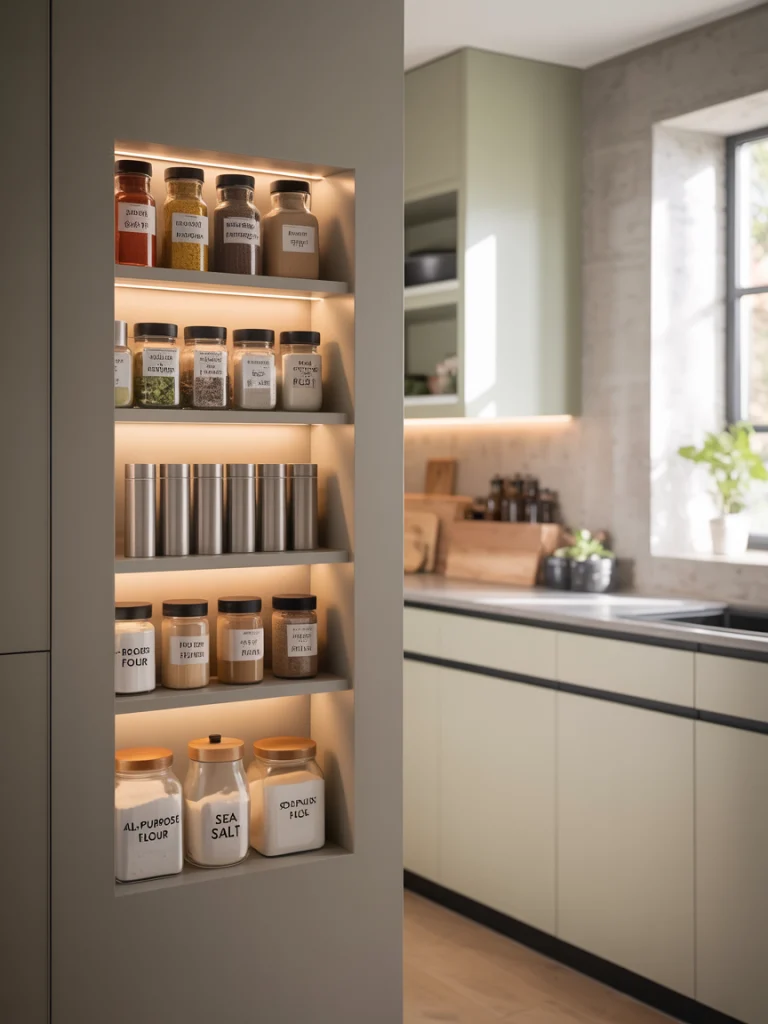
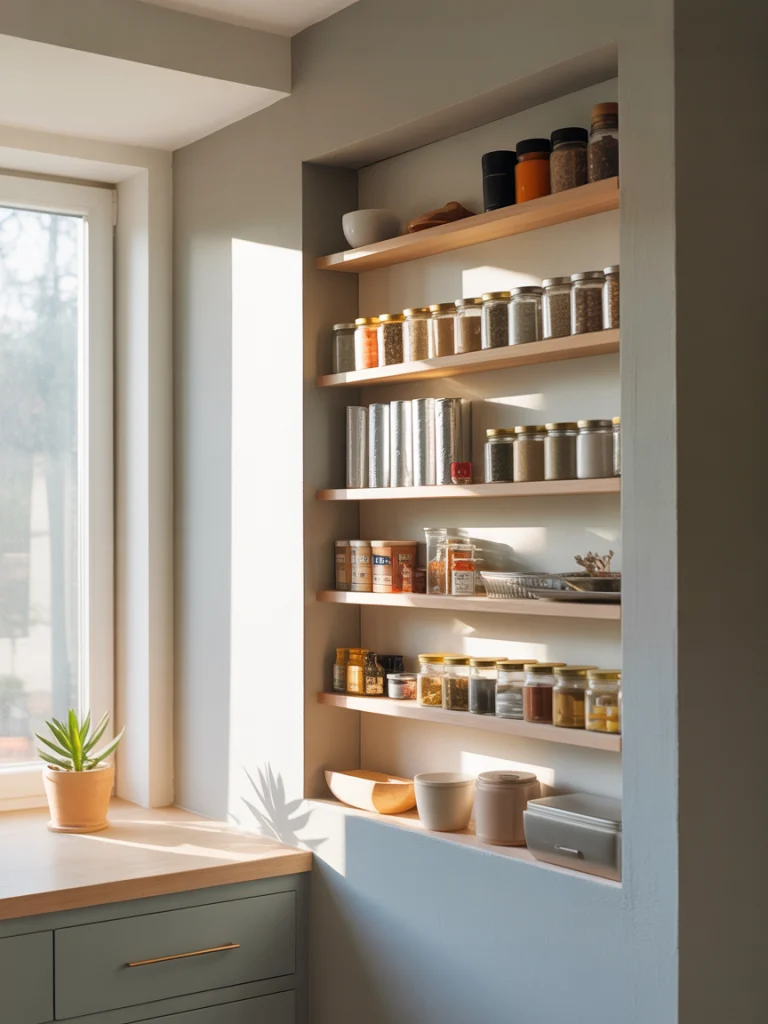
Shallow shelves between wall studs can become a pocket pantry. These narrow sections are perfect for spices, foils, and jars that do not need deep space.
This hidden storage increases capacity without enlarging the kitchen footprint. It is especially useful in older homes with thick walls.
Organize with color codes:
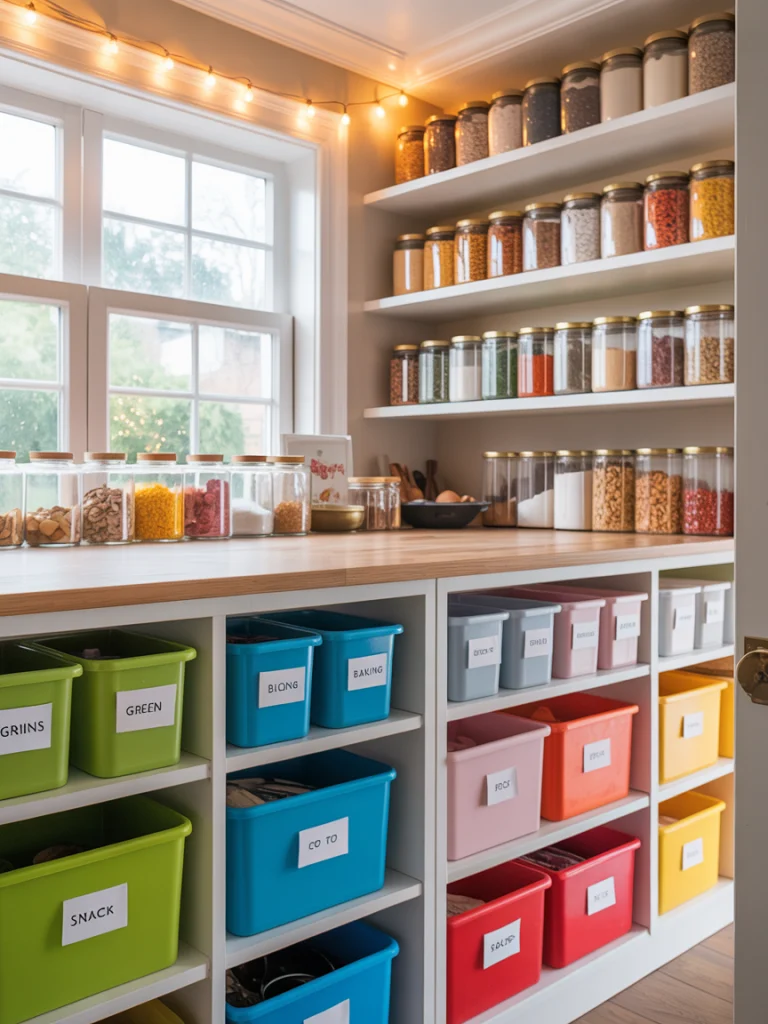
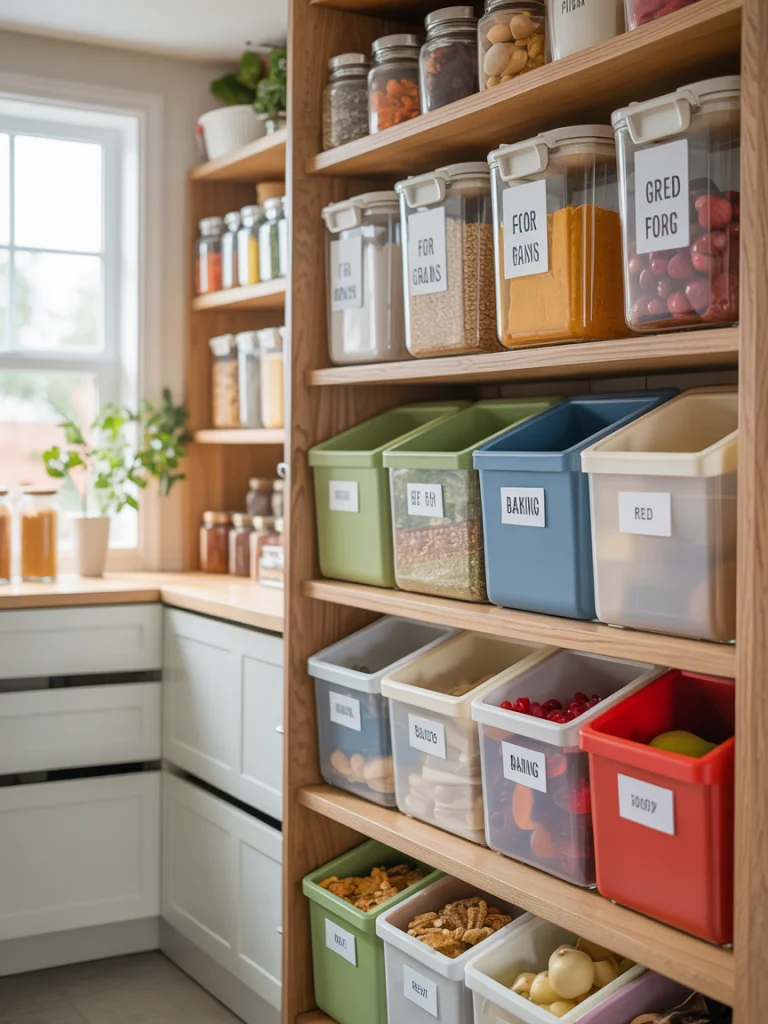
Assigning colors to different categories such as green for grains, blue for baking, or red for snacks helps the whole family. Colored bins or tape on lids provide quick visual cues.
Color systems support children, guests, and even busy adults who want to save time. They make organization intuitive and simple.
Maintain a five-minute reset habit:
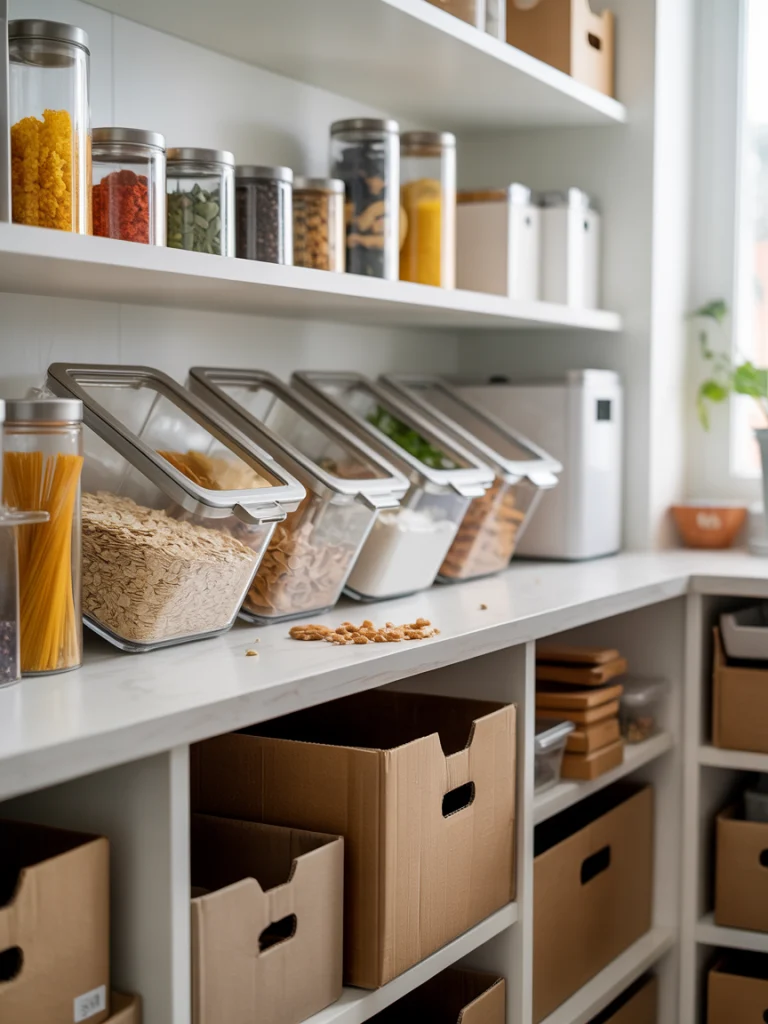
Spending just five minutes each week to tidy the pantry keeps it under control. Sliding older goods forward, wiping crumbs, and tossing empties prevents buildup.
This routine is small but powerful. It makes the pantry self-sustaining and stops clutter before it starts.





